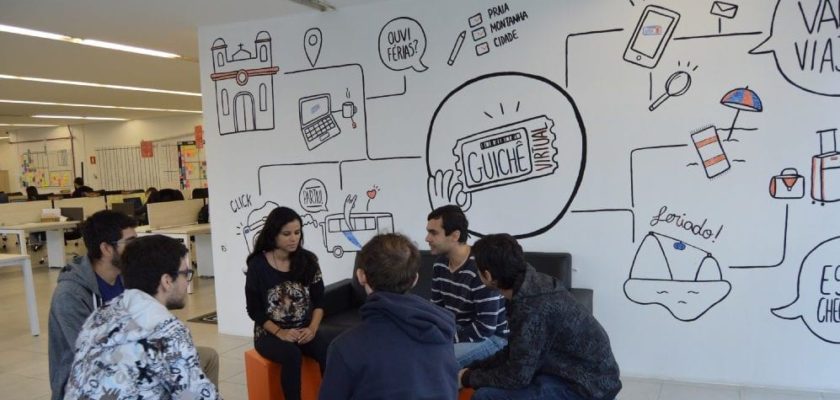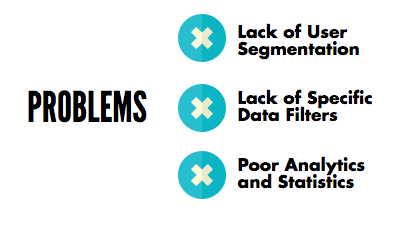Lessons Learned From Guichê Virtual

Here at Taplytics, we’re excited to launch an interview-based series focused on several industry leaders and their journeys through A/B testing. Every company is unique, and their experiences differ drastically across the board; hopefully, some of these stories resonate with you and what you hope to achieve through mobile optimization.
Guichê Virtual is an online platform for purchasing bus tickets in Brazil and South America. Headquartered in Paraíba Valley (the Silicon Valley of Brazil), they provide access to more than 70 bus companies and were the first in the industry to develop both Android and iOS native apps.
Cassiano Monteiro is Guichê Virtual’s lead mobile software engineer and iOS developer. He took the time to answer some of our questions about the company’s history, and their venture into A/B testing.
“The two pillars of our company are great products and great support.”
Four and a half years ago, Guichê Virtual started as purely a website platform. The small team consisted of ten total, with only three developers. When they decided to progress to mobile, it was simply a hybrid application with web view — even though it worked, it wasn’t great.
After two years, the company landed an investment and scaled up, resulting in the creation of departmentalized teams. It was at this point that Cassiano came in to coordinate mobile development and take point in building a better version of the previous app.

Bumps in the Road
The mobile team went back to the drawing board, developed an MVP for the app, and began to rebuild basic features from there. Through Google Analytics and Amplitude, they were able to track some basic data for app usage; however, they wanted to get more into the specifics of the user experience. There was no UX designer and it became imperative to turn towards A/B testing as a tool for iterating beyond core functionality.
Initially, they did some testing on Android with the Google Play staged rollout feature but didn’t have an option for iOS devices. The Firebase remote configuration tool was also considered, but wasn’t advanced enough at the time and lacked the ability to effectively segment users or filter data. It allowed them to enable and disable configurations for the entire user base, but A/B testing required stronger user partitioning. Another challenge was attempting to analyze data and determine statistical significance in-house.

Journey to Taplytics
As Cassiano began looking more seriously into A/B testing solutions, he relied on word of mouth as his primary form of research. Other companies in the same investor’s portfolio recommended the platforms they used and Guichê Virtual began testing with one of the suggested vendors. Unfortunately, issues began to surface. The integrations didn’t work well and the data was far from representative, as they only had access to approximately 5% of the total data they were actually receiving. With a lack of statistically significant conclusions, Cassiano needed to consider other options. He eventually came across Taplytics, tried us out, and switched over when he found that we suited the mobile team’s needs.
“The main reason we chose Taplytics was because the experience was smooth from the beginning to the end. None of the other tools worked perfectly the whole way.”
In the beginning, they worked towards redesigning the entire app by starting with smaller visual changes such as font and colour. After the new version was rolled out, Cassiano moved onto using Taplytics for testing on a larger scale, including user flows and in-app messaging. Their goal is to run a test at least once a week, and we’re excited to see Guichê Virtual leverage the power of A/B testing to its full potential.
Paving the Way to Success
When Guichê Virtual first entered the market, they were competing with another major player in the space. Initially, their competitor was able to secure more funding from investors, whereas Guichê Virtual relied on capital from the founders themselves. However, they took a different approach than their rival; rather than spending resources on marketing, they dedicated time towards developing the product itself and offering quality support for clients.
Within three years, Guichê Virtual overtook their competitor, who offered little return on investment for investors and was eventually bought out.
“It’s our main goal for the entire company to improve our products, not just the app, but the entire platform, and to have a great experience for our users.”
We believe that a strong product speaks for itself, and having good support to back it up is essential. Here at Taplytics, our approach is the same as Guichê Virtual’s — we spend a lot of time developing our A/B testing solution and we spend a lot of time working with clients to ensure their success.
“One thing that caught our attention is that Taplytics could help us not just technically, but also with understanding and preparing our tests.”
So, what are the main takeaways from Guichê Virtual’s story?
• Focus on your product
• Focus on helping your customers
• Always think about how to improve
• Slow and steady wins the race
Guichê Virtual isn’t just helping consumers book bus tickets — they’re fully invested in reinventing a part of the travel experience.
Have a story about optimization or company growth? Shoot us an email at hello@taplytics.com in order to be featured!

